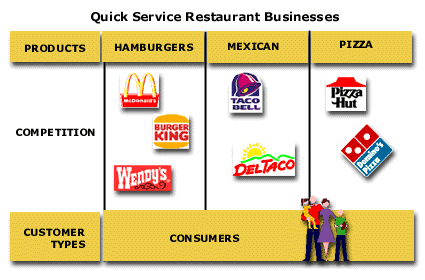BASIC STRATEGY GUIDE: STEP 1
Activity One (Steps 1-12):
Segment customers, both by size and by need, to identify targets for the Company. Your business must grow to prosper. You grow your business by selling more of your Company’s product. You increase your sales by selling more products to your current customers and by finding new customers to buy your products. But, not all customers are equally valuable to you. Your best customers are the core of your business. The purchases a Core customer makes from you provides a good profit for your Company, a profit large enough to make a good return on your investment in the business. Other customers are less valuable to you than the Core customers. Some will purchase products from you, but at low prices. Or, they will be costly for you to serve because they require a lot of service but buy little from you. Others will not buy from you at all. The time and resources you spend on them are wasted.
This first activity of the Basic Strategy Guide identifies your Core customers, or those who could become Core customers, and creates new segments of these Core customers according to the needs these customers have that you and the other competitors in the market have not met yet.
Step 1: Define the business

What:
Define the business for which the Company would like to develop a strategy. When defining that business, consider its three aspects:
-
Products: The products in the business all use the same kinds of assets and infrastructure.
-
Competitors: The competitors (i.e. the competitor itself, or the subsidiary or division of the competitor) in the business sell the majority of their products in the business.
-
Customer types: The customer types use the product for similar applications.
Why:
If any two of these three aspects change, the Company must consider carefully whether there is more than one business under review.
-
The most important aspect is the competition. A change in the competition makes it likely that the business changes.
-
The next most important aspect is customer types. As customer types change, their needs change and competition is likely to respond in new ways.
-
The last aspect to consider in defining a business is the set of products. Many businesses have multiple products. These are usually product Price Points. If a new product is not a clear substitute for one of the current products in the market, that new product is likely to be part of a different business.
What to Watch For:
-
Any customer segment that buys products using significantly different criteria than do the remaining segments may be in a different business
-
Generally, any forward or backward integration by the company is an entry into a new business.
-
Any product Price Point where the company has unusually low or high share compared to its share in the rest of the market has the potential to indicate that that part of the industry is a separate business with unique characteristics.
-
Competitors entering the industry from another industry may create a new business by significantly changing the product/service package offered to customers.
Action:
Develop a separate strategy and tactics for each business.
More Information on the Advanced Site>>
| For helpful context on this step: |
Videos:
Perspectives:
Symptoms and Implications:
